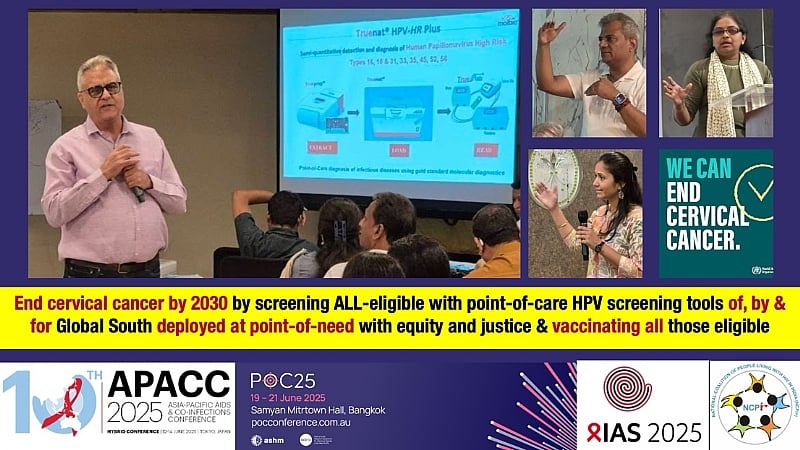Cervical cancer, the fourth most prevalent cancer among women globally, presents a stark paradox: it is both preventable and curable with early detection and effective management, yet it claimed the lives of over 350,000 women in 2022. The burden of this disease falls disproportionately on younger women, with tragic consequences for their families, as cervical cancer accounts for 20% of cancer-related maternal deaths. While the World Health Organization (WHO) has galvanized a global commitment to eliminate cervical cancer by 2030, progress remains insufficient. The stark reality is that access to life-saving interventions, including vaccination, screening, and treatment, is severely limited in the regions most affected by this preventable disease.
A significant driver of this disparity is the inequitable distribution of resources and healthcare access between high-income countries and low- and middle-income countries (LMICs). A staggering 94% of cervical cancer deaths in 2022 occurred in LMICs, where healthcare systems often struggle to provide basic services. This reflects a broader pattern of health inequities, where access to prevention and treatment is often determined by socioeconomic factors, perpetuating a cycle of vulnerability and preventable suffering. While cost-effective strategies for prevention, such as HPV vaccination and screening, exist, they remain largely inaccessible to women in LMICs, highlighting a critical gap in global health equity.
Despite the availability of HPV vaccines for nearly two decades, their rollout in the Global South has been far from adequate. While the development of Cervavac, India’s first indigenously produced HPV vaccine, represents a significant step towards greater access, its integration into public health programs remains a challenge. This underscores the persistent barriers to equitable vaccine distribution and highlights the need for greater investment in strengthening healthcare infrastructure and ensuring access for all, regardless of geographic location or socioeconomic status.
The inequities in access extend beyond vaccination to encompass HPV screening. Traditional methods like Pap smears and VIA tests, while widely used, suffer from limitations in sensitivity and accuracy, particularly in resource-constrained settings. While advanced molecular HPV tests offer greater accuracy, they remain inaccessible to most women in LMICs, hindering early detection and timely intervention. The reliance on outdated methods further exacerbates the existing disparities in cervical cancer outcomes, emphasizing the urgent need for affordable and accessible diagnostic tools tailored to the needs of LMICs.
A promising development in this area is the Truenat HPV-HR Plus, India’s first indigenously developed point-of-care molecular HPV test. This innovative diagnostic tool, validated by leading research institutions, offers a highly sensitive and specific method for detecting high-risk HPV genotypes, which account for the vast majority of cervical cancer cases. The portability and ease of use of Truenat make it ideally suited for deployment in resource-limited settings, bringing accurate and timely diagnosis closer to the communities most in need. Its integration into existing healthcare infrastructure, particularly the extensive network of Truenat devices already deployed globally for tuberculosis testing, offers a cost-effective pathway to expanding cervical cancer screening and bridging the diagnostic gap.
The development of Truenat exemplifies the importance of local innovation in addressing global health challenges. By leveraging existing infrastructure and tailoring solutions to the specific needs of LMICs, this technology holds the potential to significantly improve cervical cancer outcomes. The increased access to accurate and timely diagnosis afforded by Truenat can facilitate early intervention, improve treatment outcomes, and ultimately contribute to the global goal of eliminating cervical cancer. In addition, the test’s ability to detect multiple high-risk HPV genotypes associated with other cancers, such as oropharyngeal cancer, further expands its potential impact, further solidifying its role as a game-changing tool.
Beyond technological advancements, raising awareness and health literacy, particularly among vulnerable populations such as women living with HIV, is crucial. Targeted outreach and educational initiatives are essential to empower individuals with the knowledge and resources to seek timely screening and treatment. The active engagement of community leaders and organizations plays a vital role in disseminating information, addressing cultural barriers, and promoting a people-centered approach to cancer prevention and care. By fostering community ownership and participation, we can create a supportive environment that encourages early detection, reduces stigma, and improves access to life-saving interventions. The convergence of technological innovation, increased awareness, and community engagement is instrumental in achieving the ambitious goal of eliminating cervical cancer, a preventable tragedy that continues to disproportionately impact women in LMICs. Continued investment in research, equitable access to healthcare, and empowerment of at-risk communities are essential to ensuring that no woman suffers needlessly from this preventable and curable disease.


